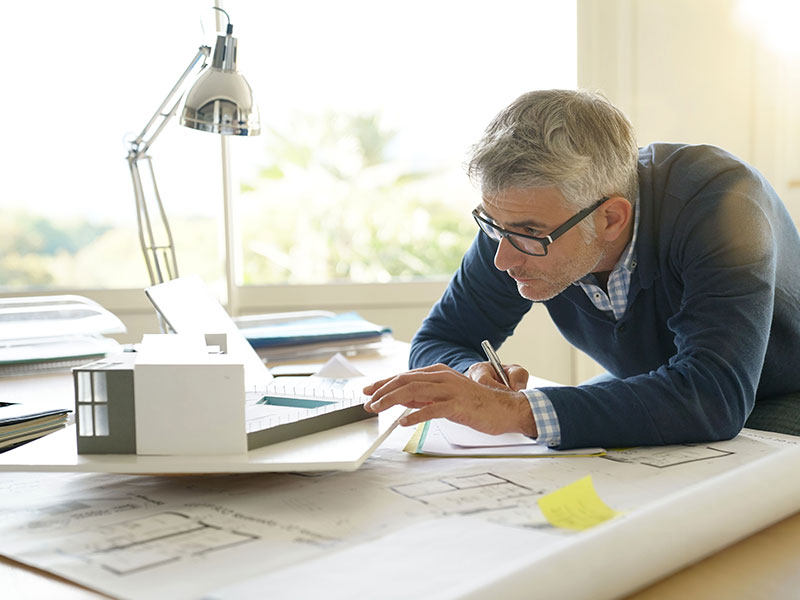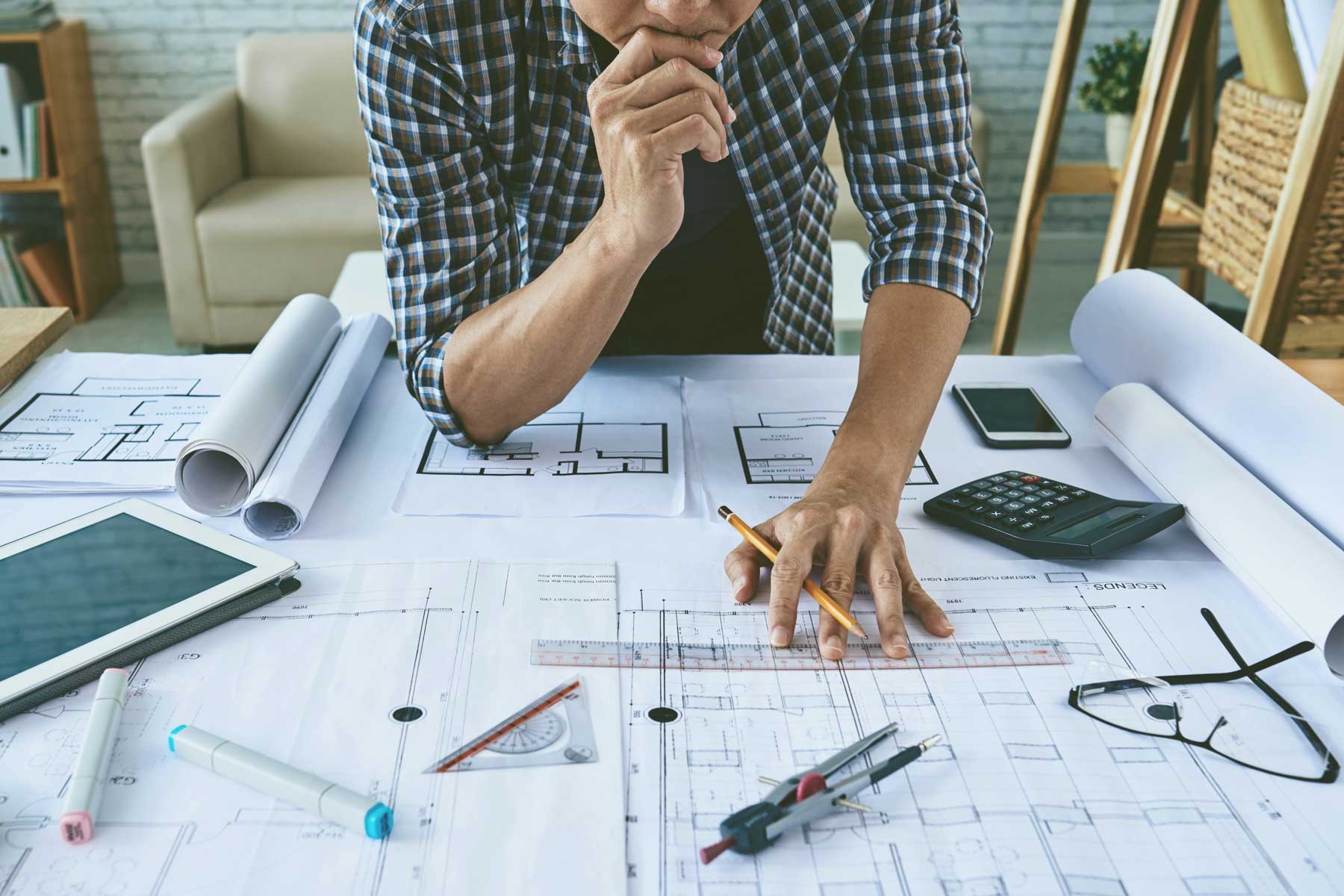Comprehending the Diverse Job Paths Available for Aspiring Architect
As an aspiring Architect, you have a globe of career paths waiting on you. Each path provides special difficulties and chances to use your creative thinking and technological knowledge. Whether you're attracted to standard architecture or the nuances of lasting style, there's a specific niche that aligns with your interests. Recognizing these varied choices can form your expert trip, however which instructions will you choose to check out initially?
Traditional Architecture: Designing Structures and Structures
Standard style focuses on developing structures and structures that mix functionality with visual appeal. Your layouts can reflect cultural heritage, showcasing local customs while satisfying contemporary needs.
You'll develop skills in drafting, model-making, and website analysis, allowing you to picture and connect your concepts efficiently. Engaging with customers, you'll require to comprehend their vision and equate it into feasible styles.
In addition, developing codes and sustainability methods are necessary in your job, guaranteeing your frameworks are safe and eco pleasant. As you grow in your job, you'll discover chances in household, industrial, or perhaps repair tasks, each offering unique difficulties. Accepting standard architecture paves the method for a satisfying job that pays homage to the past while forming the future.
Urban Preparation: Shaping Areas and Public Spaces
As a hopeful Architect, you can play an essential role as a metropolitan organizer, changing exactly how neighborhoods function and communicate. By employing neighborhood involvement methods, you'll ensure that residents have a voice in forming their environment. And also, incorporating lasting style principles will assist create rooms that not only satisfy today's demands yet likewise secure the future.
Duty of Urban Planners
While numerous could assume of designers as the single dreamers behind buildings, metropolitan organizers play a vital function in shaping the more comprehensive landscape of neighborhoods and public spaces. By collaborating with numerous stakeholders, you'll help create parks, transportation systems, and domestic locations that promote social interaction and accessibility. Your proficiency in spatial design and neighborhood characteristics enables you to imagine future development while maintaining social heritage.
Neighborhood Involvement Strategies
Efficient neighborhood interaction techniques are crucial for city planners to guarantee that the voices of homeowners are heard and valued in the planning process. To cultivate meaningful discussion, you need to focus on open discussion forums and workshops where area participants can reveal their concepts and problems. Use studies and social networks to get to a more comprehensive audience, guaranteeing varied perspectives are included. Collaborating with neighborhood companies can improve trust fund and help with deeper links. It is essential to provide clear info regarding decision-making processes and suggested projects, permitting locals to feel informed and encouraged. By proactively integrating and paying attention comments, you'll develop spaces that reflect the area's needs, inevitably bring about even more sustainable and effective urban atmospheres. Accept openness and constant dialogue for enduring impact.
Sustainable Style Principles
When developing metropolitan areas, integrating lasting design principles is important for creating environments that thrive both ecologically and socially. Take into consideration incorporating environment-friendly areas, like gardens and parks, to improve biodiversity and enhance air high quality.
Designing with water preservation in mind is additionally essential-- think of rainfall gardens and absorptive surfaces to take care of stormwater. Entailing community participants during the preparation procedure guarantees that the areas you create meet their requirements and encourage social interaction. By welcoming these concepts, you'll add to vibrant, sustainable metropolitan landscapes that benefit everyone.

Landscape Style: Producing Sustainable Outside Environments
As you explore landscape style, you'll uncover important layout principles that produce gorgeous and useful exterior spaces. Sustainable methods play a vital role in ensuring these settings thrive while decreasing environmental effect. Plus, you'll discover a variety of profession possibilities that allow you to make a genuine distinction in exactly how people engage with nature.
Layout Concepts in Landscape
Understanding design concepts in landscape architecture is important for creating sustainable exterior settings that balance with nature. You'll require to ponder components like range, equilibrium, and proportion to assure your styles feel natural and inviting. Integrating indigenous plants not only boosts biodiversity but additionally lowers water usage, making your landscape resistant. Consider the circulation of space and how people connect with it; paths and seating areas must welcome exploration and leisure. In addition, take notice of seasonal modifications, developing with materials that match the environments year-round (Architect). By prioritizing sustainability and aesthetic appeals, you can develop exterior areas that enrich the community and advertise health. Welcoming these concepts will certainly set a strong foundation for your occupation in landscape design.
Lasting Practices Summary
Sustainable practices in landscape style not only concentrate on aesthetic appeals yet likewise focus on environmental wellness and source conservation. By incorporating indigenous plants, you improve biodiversity and lower the demand for chemical fertilizers and pesticides. informative post Applying efficient watering systems helps conserve water and minimizes runoff, securing neighboring environments. You can design rooms that advertise dirt wellness, such as using organic materials and practicing permaculture concepts. Furthermore, integrating green infrastructure, like rainfall yards and porous pavements, help in stormwater administration and reduces urban warm. You contribute to a healthier earth and offer rooms that promote community link when you develop outside atmospheres with sustainability in mind. Eventually, these methods ensure your layouts profit both people and the atmosphere for several years to come.
Occupation Opportunities Expedition
With a strong structure in sustainable techniques, landscape style uses a selection of job courses that allow you to make a significant influence on the environment. Urban planners frequently collaborate with landscape designers to produce green rooms in urban settings, improving city livability. If you're enthusiastic about education and learning, think about coming to be a landscape style educator, motivating future generations.
Sustainable Design: Concentrating on Eco-Friendly Practices
As you explore your career in architecture, welcoming environmentally friendly techniques can establish you apart in an affordable field. Lasting design concentrates on producing buildings that minimize ecological influence while enhancing owner well-being. By integrating eco-friendly materials, energy-efficient systems, and lasting structure strategies, you'll add to a greener future.
Start by getting expertise of environment-friendly accreditations like LEED or BREEAM, which can bolster your credentials. Take into consideration just how natural light, ventilation, and thermal performance can optimize design. Team up with engineers and environmental specialists to innovate options navigate to this website that reduce waste and save sources.
Don't fail to remember the importance of neighborhood involvement-- engaging local stakeholders can inspire designs that integrate with the setting. As customers progressively focus on sustainability, your proficiency in eco-friendly methods will certainly not only draw in projects but additionally accomplish your enthusiasm for accountable architecture. Accept this critical aspect of the occupation, and enjoy your occupation flourish.
Historic Conservation: Safeguarding and Bring Back Social Heritage
While you start on your architectural journey, consider the necessary duty of historic conservation in keeping our social heritage. This area concentrates on the security and remediation of considerable structures, sites, and frameworks that tell the stories of our past. By taking part in historical conservation, you'll aid guard the building legacy that shapes area identity.
As a historic conservation Architect, you'll examine historic importance and assess the problem of structures. You'll function carefully with conservationists and historians to ensure genuine restoration techniques are utilized. This profession path enables you to mix creative thinking with research study, enabling you to create remedies that value original materials and craftsmanship.
Your work not just contributes to sustainability by reusing existing buildings yet likewise promotes a feeling of satisfaction within neighborhoods. Accepting this great site course will certainly help you become a guardian of background, protecting the tales and looks that improve our lives.
Interior Design: Enhancing Indoor Spaces
Historic preservation and indoor style both share a dedication to improving the developed setting, however they concentrate on various aspects. While historic preservation highlights maintaining a framework's historical and social value, interior architecture nos in on optimizing interior rooms for functionality and appearances.
As a hopeful Architect, you'll find that indoor architecture enables you to blend creative thinking with technical abilities. You'll develop rooms that not only look great yet also advertise convenience and performance. This area involves comprehending just how light, color, and products connect within an area, affecting mood and use.
You'll work with numerous projects, from residential homes to business workplaces, making certain that each setting satisfies the requirements of its residents. By focusing on user experience, you can transform insides right into motivating and practical areas, making a considerable effect on exactly how people interact with their surroundings. Accept the chance to boost indoor settings and shape the method individuals work and live.
Industrial Layout: Merging Functionality With Aesthetic Appeals
Commercial style plays a necessary role in producing products that seamlessly blend appearances with performance, making sure that what you use everyday is not only aesthetically attractive yet likewise functional. As a hopeful Architect, you can immerse on your own in this field, concentrating on designing everything from furnishings to consumer electronics. Your job involves comprehending customer demands, materials, and manufacturing processes, permitting you to produce innovative solutions that enhance daily experiences.
In commercial style, you'll commonly collaborate with manufacturers, engineers, and marketing experts, making certain that your designs are not just beautiful but also possible. This occupation course offers a dynamic atmosphere where imagination satisfies practicality, making it a fulfilling selection for architects interested in forming the items of tomorrow.
Often Asked Concerns
What Educational Qualifications Do I Required to Become a Designer?
To become an engineer, you'll need an expert level in design, generally a Bachelor's or Master's. Furthermore, you'll have to finish a teaching fellowship and pass the Architect Registration Exam to practice lawfully.
Are There Certification Requirements for Various Architectural Occupation Paths?
Yes, there're qualification needs for various architectural courses. Architect. You'll require to pass examinations, full internships, and occasionally go after specialized training, depending upon your chosen emphasis, like landscape architecture, metropolitan layout, or historic conservation
What Software Program Abilities Are Vital for Engineers Today?

How Can I Gain Practical Experience While Researching Style?
You can get practical experience by interning at building companies, participating in layout competitions, offering for neighborhood tasks, or collaborating with classmates on real-world projects. These chances improve your abilities and develop beneficial links in the market.
What Work Opportunities Exist Outside Conventional Architecture Firms?
You can discover various task chances outside traditional style firms, like city preparation, interior decoration, landscape design, building and construction management, realty development, or also functions in sustainability consulting. Each offers one-of-a-kind difficulties and benefits.
Whether you're drawn to standard architecture or the subtleties of sustainable design, there's a niche that lines up with your passions.When designing urban rooms, including sustainable layout concepts is vital for producing atmospheres that prosper both ecologically and socially.As you explore landscape style, you'll find vital style concepts that develop useful and attractive exterior areas.Comprehending design principles in landscape architecture is important for producing lasting outside environments that integrate with nature.In industrial style, you'll commonly collaborate with suppliers, online marketers, and engineers, making sure that your layouts are not just lovely yet likewise feasible.